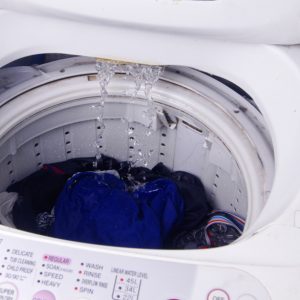Mold has a way of sneaking up on you and this means that it can grow in some of the most unexpected places. Depending on where the mold grows and how long it goes unchecked, it can present a number of health risks.
The dangers of mold
Exposure to mold in your home can lead to a number of medical concerns. Particularly since you are exposed to these spores on a regular basis and over a prolonged period of time. Some symptoms of mold exposure to look out for include:
- Sinus and nasal congestion
- Itch, red and watery eyes
- Difficulty breathing
- Throat irritation
- Coughing
- Headaches
- Skin irritations and rashes
How mold affects your appliances
The first thing to remember is that mold requires water in order to grow. Poor ventilation, clogged drains and leaks can all result in the development of mold. In your refrigerator, this can result in the ingestion of these spores which can affect your health in any number of ways. If mold develops inside your washer or dishwashers, you will notice that your clothing and dishes will not smell fresh and clean as they should. This means that your appliance is spreading those spores around every time you use it.
Front-Load Washers

Where mold hides:
If you have a front-load washer, mold can hide in the door seal and detergent drawer. Moister gets trapped in these parts of the appliance and this results in the spore growth.
How to clean it:
Create a mixture of 2 cups of white vinegar, ¼ cup of baking soda and ¼ cup of water. Use this mixture to wipe all the affected areas.
How to prevent it:
When you are done using your washer, you should leave the door and the detergent drawer open so that it can air dry. You should also remove laundry from the washer as soon as the load is done.
Top-Load Washers

Where mold hides:
Mold manages to take hold between the drum and inner walls of these types of washers due to the water and humidity of each load of laundry.
How to clean it:
Once a month, you should run a wash cycle without any laundry. Instead, you should add 3 to 4 cups of white vinegar and set the water temperature as high as possible.
How to prevent it:
Avoid using too much detergent and leave the lid open when you are done washing your laundry. Remove your laundry immediately once the wash cycle is complete. Clean your washer regularly for the best results.
Refrigerators

Where mold hides:
The most common place where you will find mold in your fridge is between the door seals. Dirt, food, grime and mold growing in this area of your fridge may go unnoticed for quite some time. Mold can also grow on old and neglected food inside your fridge. When the warm air mixes with the moister in the fridge, spores develop. Remember, there is no real ventilation in your fridge since the whole idea of this appliance is to keep cool air inside. So, even though it is cold, there is no real air circulation and spores develop and multiply faster than you may realize.
How to clean it:
White vinegar or hydrogen peroxide can be sprayed onto the affected areas and wiped clean. The seals or gaskets on your fridge are known for having many crevices which is why you may want to whip out an extra toothbrush or cotton swab to get into all those tricky areas.
How to prevent it:
Since your fridge houses moisture and you store food here constantly, it’s easy to understand how mold might seem unavoidable. The key is to properly maintain your fridge and stick to a strict cleaning routine. If you notice a spill, you should clean it up immediately. You should also wipe down the interior of the appliance (walls, shelves, door and seals) with vinegar once a month to keep mold at bay.
Dishwashers

Where mold hides:
Water comes into contact with many different parts of your dishwasher including the filter, cutlery basket, door gasket and interior panels. When damp food particles are left behind after the wash cycle, they can spawn the growth of mold spores.
How to clean it:
Use diluted bleach to scrub the interior of the appliance as well as the gasket. Each week, you should glean the gasket and run an empty wash cycle. Inspect the cutlery basket and filter on a regular basis for food particles and clean them out.
How to prevent it:
As mentioned above, regular cleaning is essential for preventing mold from growing.
How can you tell when your appliance has mold?
Different appliances present different symptoms when it comes to the development of mold. In your washer, you may not notice the growing spores but you will notice how your clothes no longer come out smelling fresh and clean. In your dishwasher, you may notice that your dishes have a strange and unpleasant odor. As for your fridge, you could notice a terrible smell when you open the door. Your food might also spoil faster since the spores are already in the works. Since these spores start out small, you may not notice them initially. This is why the best way to get rid of mold is by preventing it from getting out of control in the first place.
Regular cleaning is an excellent approach. It also gives you the perfect opportunity to inspect various parts of the appliance such as the gaskets for any damage. A damaged gasket does not only compromise the seal. It can also allow various particles and spores to develop in unseen areas that are impossible to reach. A damaged gasket should be replaced right away. If your appliance is leaking, mold can also develop around the appliance and this can prove just as devastating. Move your appliance regularly to clean around and check for any mold spores in areas that are tough to reach.
